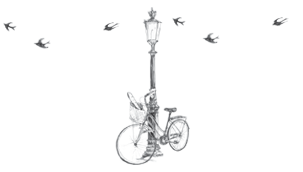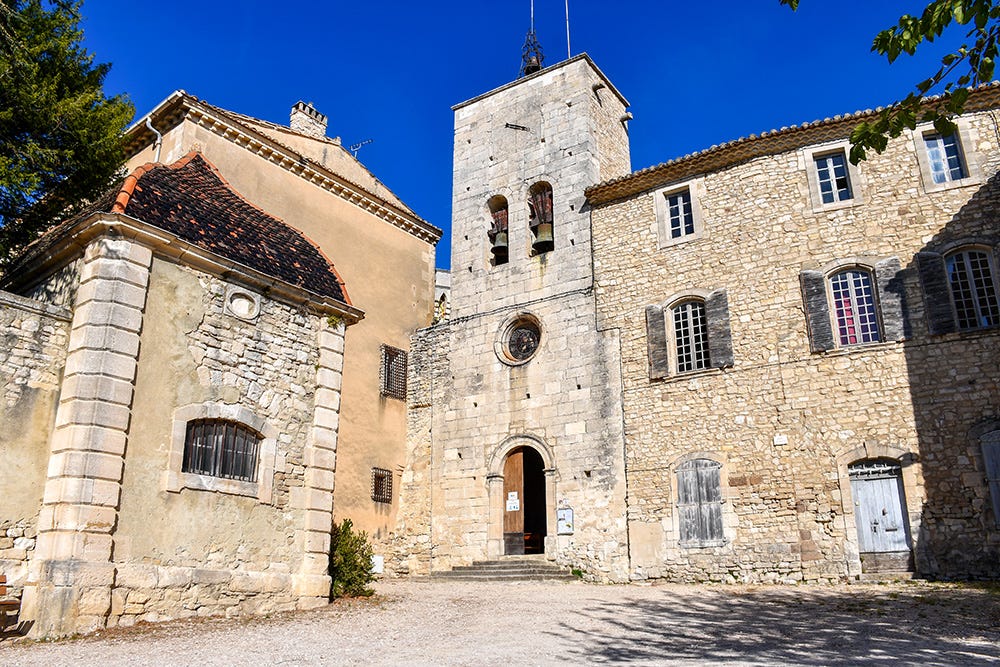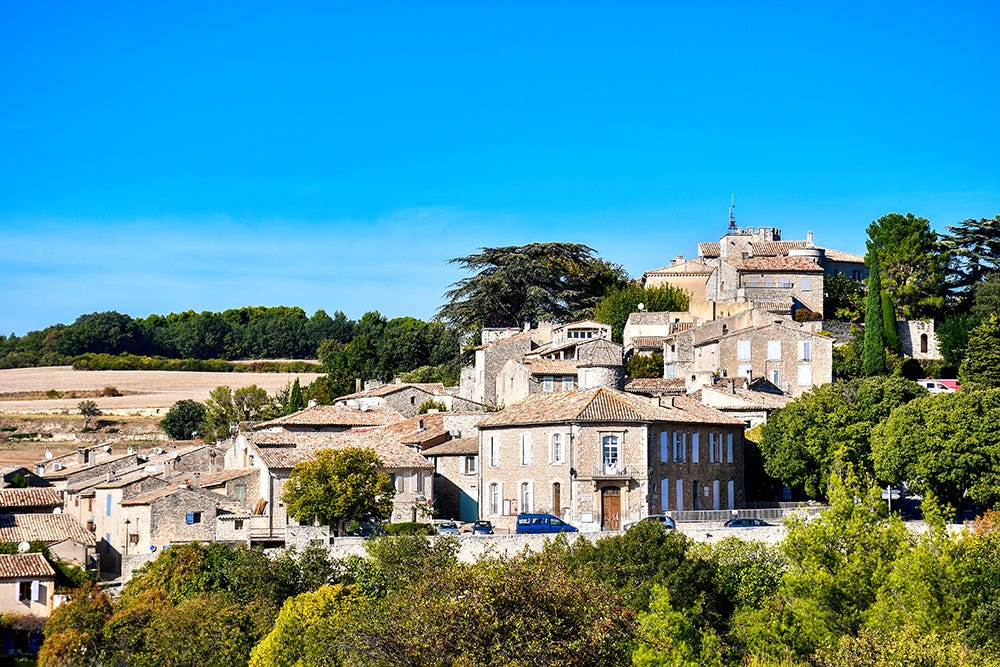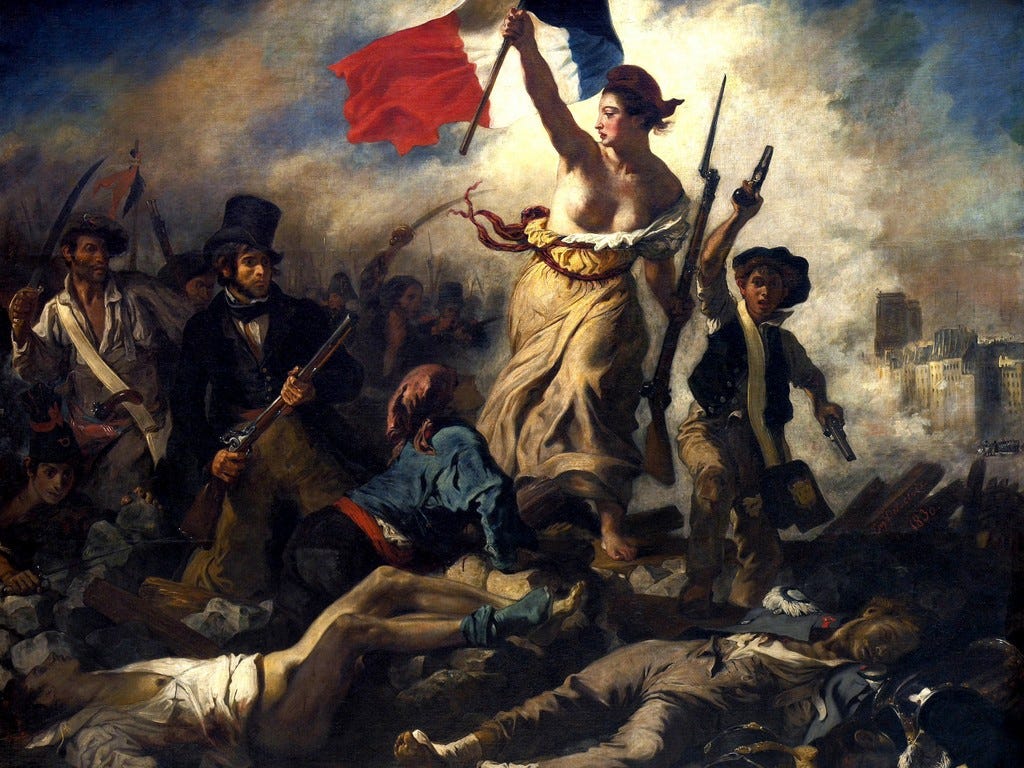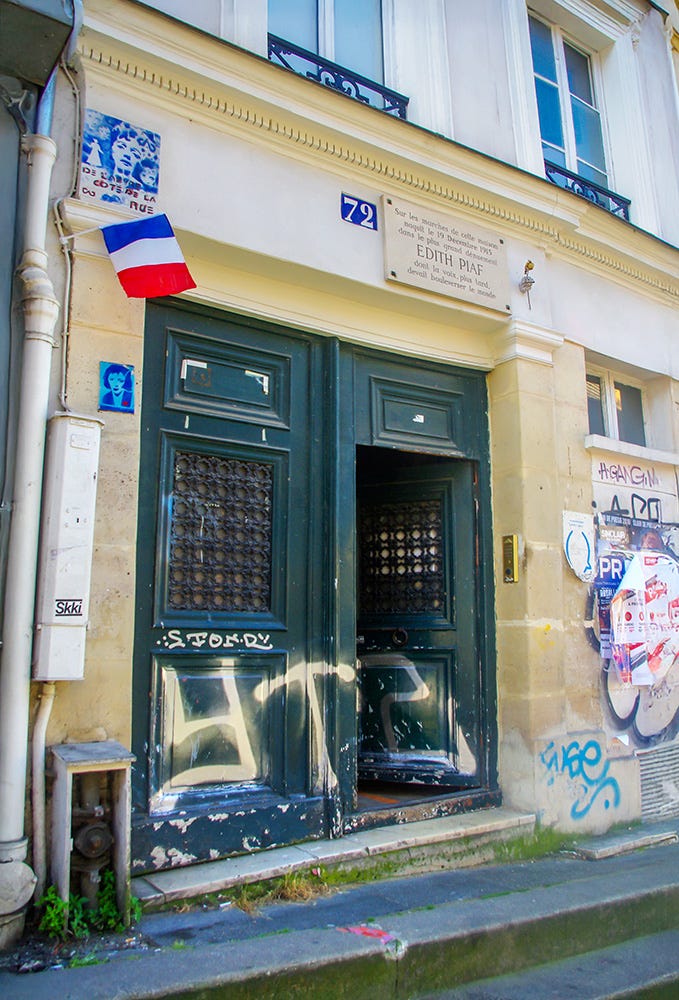Your French Moments: A Provencal Escape, a Parisian Mystery, and the Colours of a Nation
Inside this FREE Substack: A peaceful hilltop village in Provence, the mystery behind Édith Piaf’s birth in Belleville, the colours of the French flag — and a powerful new ebook to mark 18 June.
Bienvenue to your FREE weekly newsletter!
Bonjour mes amis!
On this 22nd of June, summer has officially begun — and you can feel it. The temperatures have climbed, and even here in England, we’ve been enjoying some wonderfully sunny days. Perfect weather for little escapes, whether by car, train, bicycle, or just on foot.
This week, I’ve been quite busy with the release of my brand-new ebook on the Cross of Lorraine (more on that further down in this email)… but I also spent time diving into the streets of Paris, the hills of Provence, and the archives of French history — not on foot this time, but through study, maps, and memories.
You might think a flag is just a bit of cloth. Think again.
And if myths, cobbled stairways, and legendary French voices are more your thing — don’t miss the Photo of the Week. I went looking for Édith Piaf… and found a tiny plaque with a rather suspicious backstory.
All in all, this edition is a sunny mix of history, hidden corners, and proudly French symbols.
Shall we dive in?
✨ Stay tuned for next Wednesday’s edition for paid subscribers!
With Bastille Day just around the corner, we’re diving into a brand new series exploring the National Symbols of the French Fifth Republic.
Last Wednesday, I shared my post: The iconic French flag — its history, meaning, and how it came to represent a nation. 🇫🇷
Next Wednesday, we will continue with A Revolutionary Anthem: The Story of La Marseillaise: the fascinating story of a song that began as a war cry — and became the soul of a republic. 🎼
🔓 UNLOCK EXCLUSIVE FRENCH MOMENTS:
Become a monthly subscriber – or choose the annual plan and save!
Enjoy captivating stories about France, French life, and culture – delivered straight to your inbox or the app, if you prefer.
Enjoy and à bientôt!
Pierre
French Village of the Week 🌻
You could drive through Murs without even noticing it. I did — for years.
Blink and you’re already out the other side, with just a faint blur of ochre stone and olive trees in your rear-view mirror.
Nestled in the folds of the Vaucluse hills, Murs isn’t loud. It doesn’t call for your attention with boutique cafés or pastel shutters. It waits — patient, proud, and perfectly still — like it has for centuries.
One autumn afternoon, I finally stopped. My daughter led the way with her confident little stride, and I followed, camera in hand, stepping into a village that felt like it had paused time.
At first, there was silence. Not the uncomfortable kind, but the kind that hums gently in your ears and makes you realise just how noisy life has been lately.
The narrow streets of Murs twist gently uphill, lined with weathered stone houses whose windows open onto nothing but sky and swaying branches.
Lintels above doorways still bear the dates of their creation — 1654, 1712 — as if to whisper, "We were here before you, and we’ll be here long after."
We climbed toward the Place de l’Église, the old heart of the village. There’s a Romanesque church there — small, sober, and unexpectedly powerful.
Squeezed between the castle and the old clergy house, it feels more like a sentry than a sanctuary. Its heavy stone bell tower could almost pass for a fortress, and maybe that’s what it was once meant to be — a place to pray, yes, but also to stand firm.
Behind the gates, the castle looms — private, imposing, yet quietly beautiful with its glazed tiles and wrought-iron grillwork.
You can’t go in, but it doesn’t matter. Murs isn’t about ticking boxes or taking guided tours. It’s about walking slowly. Looking up. Noticing.
Beyond the church, we found a plaque marking the birthplace of Louis de Crillon, known in his time as “le Brave Crillon,” a soldier so revered by King Henri IV that he called him the finest captain in the world.
He was born here in 1541, long before this village faded from the spotlight. And still, even now, his name survives — not just on the house, but in the grandeur of Paris’ Hôtel de Crillon on the Place de la Concorde.
As we wandered back down through the village, I saw the signs of daily life — a pot of thyme on a windowsill, a cat sunning itself in the last light of the day, the echo of a broom sweeping a courtyard.
There are fountains and washhouses here too, bories hidden in the woods, and wells dug deep into the limestone rock — reminders of how hard life could be, and how resilient people had to become.
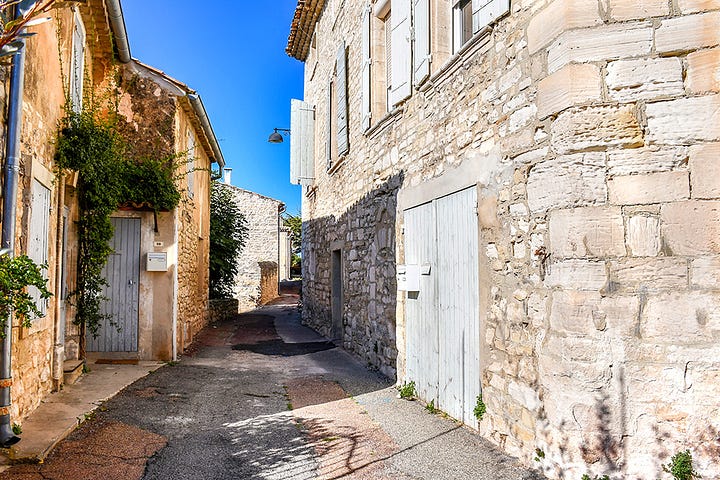
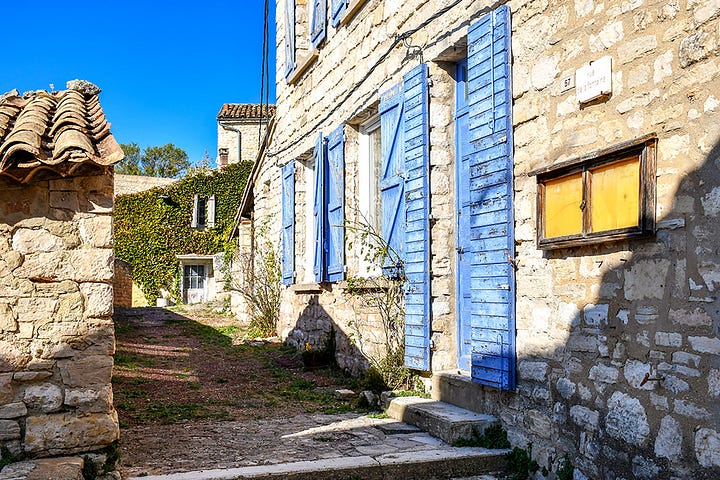
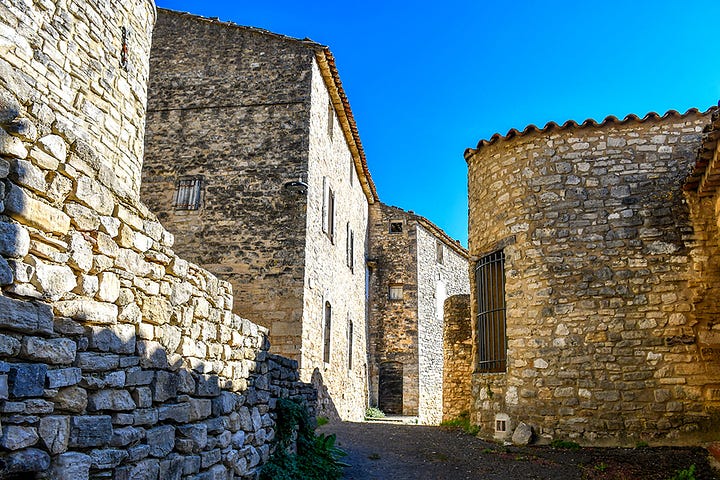
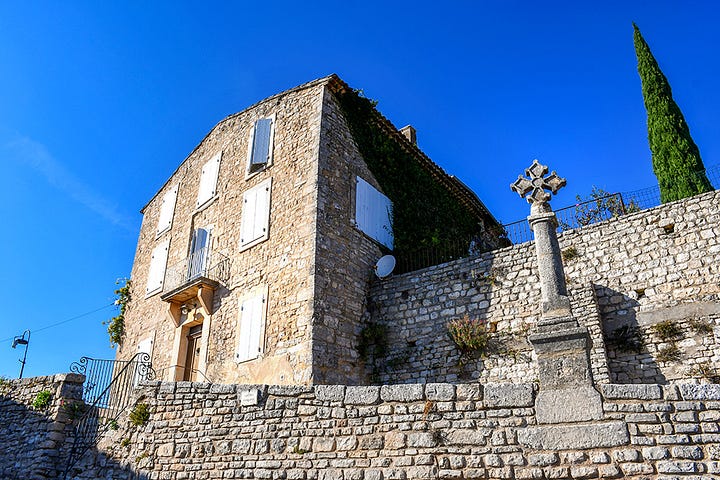
The countryside beyond is nothing short of idyllic. Rolling hills painted in shades of green and gold, cherry trees in tidy rows, fields of lavender that wait for summer, and dry-stone walls curling through the landscape like ancient poetry. Unlike its famous neighbours, Murs doesn’t flaunt its beauty. It just is.
And that, perhaps, is its magic.
And if you ever do stop, like I did, don’t be surprised if the village speaks to you.
Quietly, of course. Just enough to make you want to return.
The Tricolour: More Than Meets the Eye 🇫🇷
You might think a flag is just a flag.
A bit of fabric fluttering in the wind. Something to hang outside a mairie, or wave in the streets after a World Cup final.
But the French flag? The Tricolour? It’s anything but simple.
And despite what your old schoolbook may have claimed, it didn’t just appear in 1789 like some patriotic magic trick. Its roots are tangled — in monasteries, on battlefields, in the cloak of a bishop, in the red-and-blue cap of a rebellious draper, and maybe (just maybe) in a cockade pinned the wrong way round.
Blue for Paris or the Virgin Mary? White for the king or the people? Red for martyrs… or massacres?
Each colour has its own story.
And before the Tricolour, France didn’t even have one flag — it had many.
A patchwork of banners for lords, cities, abbeys, and crusades.
The royal Oriflamme was bright red, said to call down divine vengeance.
The fleur-de-lys covered shields and standards. Joan of Arc’s flag was white, with angels.
And Henri IV wore a white scarf into battle so his men could rally to “mon panache blanc”.
So how did this kaleidoscope become a single flag? And why has it endured — when so many other symbols fell with the kings who raised them?
That’s the story I tell in this week’s article for paying subscribers.
Photo of the Week 📸
Edith Piaf was born… on the steps?
At first glance, it’s just another door in Belleville.
Scratched paint. Faded wood. A few posters peeling off the wall. You’d walk past without a second thought — unless, like me, you were chasing odd corners and hidden stories, camera in hand.
That day (nine years ago), I had come to Belleville not for croissants or boutiques, but for something less polished: those unusual sites, full of forgotten stories and flaky paint.
And then, at number 72 of a not-so-glamorous street, I looked up.
A French flag. A plaque. And a bold declaration carved in stone:
"Sur les marches de cette maison naquit le 19 Décembre 1915 dans le plus grand dénuement EDITH PIAF dont la voix, plus tard, devait bouleverser le monde"
Born on the steps? Right here, between a graffitied door and a broken doorbell?
It felt poetic. Tragic. Almost cinematic.
Too cinematic, in fact.
Because the truth is — and I hate to break the spell — Édith Piaf wasn’t born there at all.
She entered the world a few streets away, in the far less romantic setting of the Hôpital Tenon.
With midwives. And hot water. And a birth certificate.
So why the plaque?
It’s what the French would call le goût du drame. And it all started with another Parisian legend: Maurice Chevalier.
He once said Piaf had been born in the street, "in the arms of misery."
The myth caught on. Reporters repeated it. Belleville embraced it. And voilà — the door got a plaque.
Is it true? Not really.
Is it poignant? Absolutely.
After all, what’s Paris without a good legend or two?
A Symbol of Resistance. A Story Worth Remembering ☨
Every year, 18 June brings with it a voice echoing from the past: that of General Charles de Gaulle, speaking from London in 1940. A call to resist. A call to hope.
But that same day, another figure began its rise — silent, striking, and full of meaning: the Cross of Lorraine.
Two bars. One message.
🕊️ Resistance.
🛡️ Faith.
🌟 Hope.
This symbol has followed me for years — through my childhood in Lorraine, through history books and old war photos, through the streets of Metz and the beaches of Normandy.
So I decided to tell its story.
And not just the WWII part — but the full journey, from its ancient origins in the Christian East to the Free French Forces of 1940.
It’s all in a short, beautifully illustrated ebook I’ve just released.
📘 The Cross of Lorraine: 2000 Years of History, Symbols and Resistance
Inside, you’ll find:
Crusaders, kings and glassmakers
Forgotten martyrs and famous generals
A symbol that stood against the swastika — and still stands today
10 chapters, 50 pages, plenty of surprises
🧭 If you’ve ever stood in front of a war memorial and wondered about that strange cross with two bars…
📚 If you enjoy untold stories, symbolic meanings, and the power of heritage…
🇫🇷 Or if you’re simply curious about France and its resilient spirit…
I think you’ll enjoy this one.
👉 The ebook is £6 (approx. $8.20). But if you're an annual subscriber, it's yours for free as a thank-you gift.
Fancy learning French with a personal touch? 🇫🇷
Whether you’re just starting out or want to brush up before your next trip to France, I offer online French lessons via Google Meet — 40 minutes of relaxed, friendly conversation, sprinkled with helpful grammar tips and cultural insights.
I already work with wonderful learners from the US, the UK and Australia — and I’d be delighted to welcome you too.
You’ll find all the details on my website. 👇
Or simply reply to this email and say bonjour — I’d love to hear from you!




